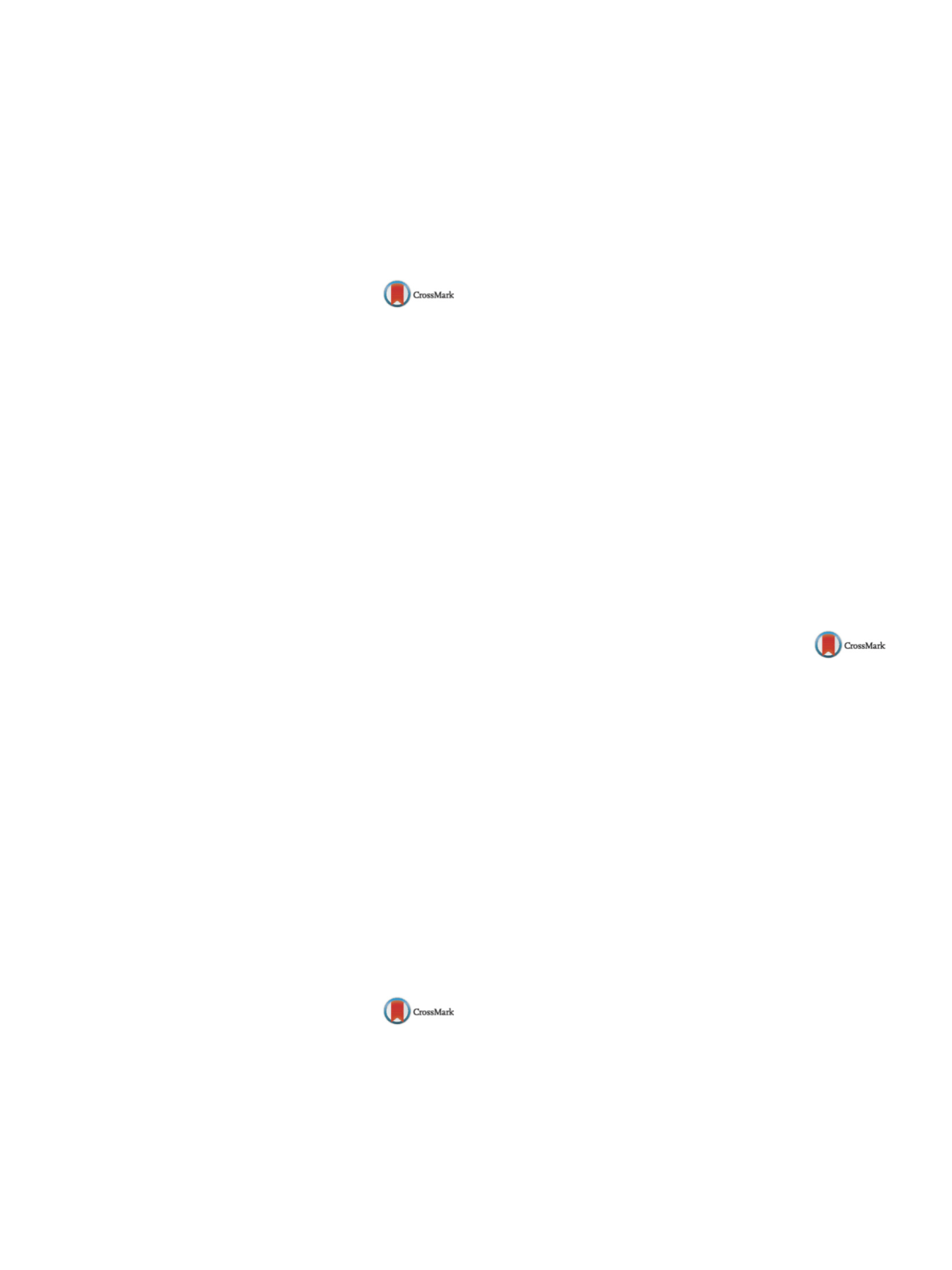

S382
25th European congress of psychiatry / European Psychiatry 41S (2017) S365–S404
treatment modalities used pr. patient was 2.07 for all patients and
3.23 for inpatients.
Conclusions
In our department, polytherapy including non-
pharmacological modalities is applied widely across all settings
and patient categories. However, psychotropic medication clearly
dominates as the most frequently applied treatment.
Disclosure of interest
The authors have not supplied their decla-
ration of competing interest.
http://dx.doi.org/10.1016/j.eurpsy.2017.02.413EW0800
H-index may influence more than
methodological variables for
publication in high impact psychiatry
journals – A systematic review
L. Primo de Carvalho Alves
∗
, A.A. Rodrigues , F. Moreira Lima ,
N. Janovik , L. Sanguinetti Czepielewski , K.M. Mendes Ceresér ,
N. Sica da Rocha
Universidade Federal do Rio Grande do Sul, Programa de
Pós-graduac¸ ão em Psiquiatria e Ciências do Comportamento, Porto
Alegre, Brazil
∗
Corresponding author.
Objectives
The scientific community assumes that rigorous
methodology research is more likely to be published in high impact
psychiatry journals (HIJ). We aimed to test which methodological
variables could predict publication in HIJ.
Methods
We conducted a systematic review of the MEDLINE and
EMBASE databases from2013, January 1st to 2015, June 15th. Inclu-
sion criteria were studies that were RCTs whose at least one arm
of the study should be fluoxetine regarding adult patients (> 18
years old) with MDD. We performed logistic regression regarding
the number of participants, intention-to-treat analysis, blinding,
multicenter study, sample losses, positive result, sponsorship of
pharmacy’s industry, and h-index of the last author. A HIJ was
considered if journal impact factor was above the median or 3rd
quartile of our sample.
Results
Forty-two studies were considered for the final analysis.
The results of the univariate logistic regression found no differences
betweenHIJ and low impact psychiatry journals for allmethodolog-
ical variables, except the h-index of the last author. By considering
HIJ when impact factor was above the mean, h-index had an odds
ratio = 1.09 (1.01–1.17),
P
= 0.02; considering HIJ when impact fac-
tor was above the 3rd quartile, h-index had an odds ratio = 1.07
(1.01–1.14),
P
= 0.02.
Discussion
Our results indicate that the author productivity may
be a relevant predictor for publication in a HIJ in the psychia-
try/psychology field. Our study proposes that journals focus on
identifying what are the relevant criteria for publication approval
in the peer-review process.
Disclosure of interest
The authors have not supplied their decla-
ration of competing interest.
http://dx.doi.org/10.1016/j.eurpsy.2017.02.414EW0801
Psychoeducational family
intervention for people with eating
disorders: Rationale and development
G. Sampogna
1 ,∗
, O .Caldararo
1 , V.Del Vecchio
1 , M.Luciano
1 ,U. Volpe
1, A. Fiorillo
1, P. Monteleone
21
University of Naples SUN, Department of Psychiatry, Naples, Italy
2
University of Salerno, Department of Medicine, Surgery and
Dentistry “Scuola Medica Salernitana”, Section of Neurosciences,
Salerno, Italy
∗
Corresponding author.
Introduction
Family members of patients with EDs report high
levels of burden, psychological distress and the need to receive
information on the disease of their ill relative. There is the need
to provide family members and patients with psychoeducational
family intervention in order to satisfy their care needs.
Objective
To develop a new psychoeducational approach for
patients with Eating Disorders (EDs) and their relatives according
to the Falloon model.
Aims
(1) To develop a family psychoeducational intervention for
patients with EDs. (2) To implement the experimental intervention
in the clinical routine care. (3) To evaluate efficacy of the approach
in terms of reduction of family burden and improvement of rela-
tives’ coping strategies.
Results
The Department of Psychiatry of the University of Naples
SUN has developed a new psychoeducational family intervention
for patients with EDs and their family members. The intervention
consists of 6 sessions, scheduled weekly. The sessions deal with
several topics such as information on EDs (e.g., causes, symptoms,
clinical characteristics), communication skills (e.g., how to express
an unpleasant feeling) and problem solving skills. The intervention
is led by trained mental health professionals, such as psychiatrists,
psychologists or rehabilitation technicians.
Discussion
This is the first example of psychoeducational inter-
vention for families of patients with EDs developing according to
the Falloon approach.
Conclusions
Family intervention represents an essential tool to
provide to patients with EDs and their family members in order to
promote a global recovery.
Disclosure of interest
The authors have not supplied their decla-
ration of competing interest.
http://dx.doi.org/10.1016/j.eurpsy.2017.02.415EW0802
Impact of communication on family
satisfaction and anxiety in critical care
K. Sundararajan
Royal Adelaide Hospital, Intensive Care Unit, Adelaide, Australia
Objective
The objectives of this study were to explore the impact
of a communication course for doctors on family satisfaction and
anxiety in an Australasian ICU and to elucidate the determinants of
family satisfaction and anxiety.
Design
Prospective observational study. Pre- and post-study
design.
Participants
One hundred and three consecutive family mem-
bers of patients staying in the ICU for more than 48 hours were
identified. Eighty-six subjects were evaluated and analysed.
Methods
Ten-point Likert scale (FS-ICU Questionnaire) used to
measure satisfaction. Hospital Anxiety and Depression Scale was
used to measure anxiety. Study performed over a 12-week period
(9 weeks pre- and 3 weeks post-course) in a 34-bed intensive care
unit before and after a communication course for junior medical
officers.
Results
Fifty-six subjects were approached for the purpose of this
study. Forty-three family members were included, 40 of patients
who survived, and 3 whose relative died in ICU. Overall family
satisfaction was high (mean scores 9.44
±
0.91). Post-course, 47
subjects were approached for the purpose of this study and 43
family members consented to participate. Overall family satisfac-
tion was high (mean scores 9.84
±
0.97). There was a statistically
significant difference in the frequency of doctors’ communica-
tion before and after the course (
P
< 0.01) and anxiety levels
(
P
= 0.0001)
Conclusion
The majority of families are happy with their care in
the ICU. A communication course aimed at junior medical officers
was effective in improving satisfaction and reducing anxiety among
family members.


















